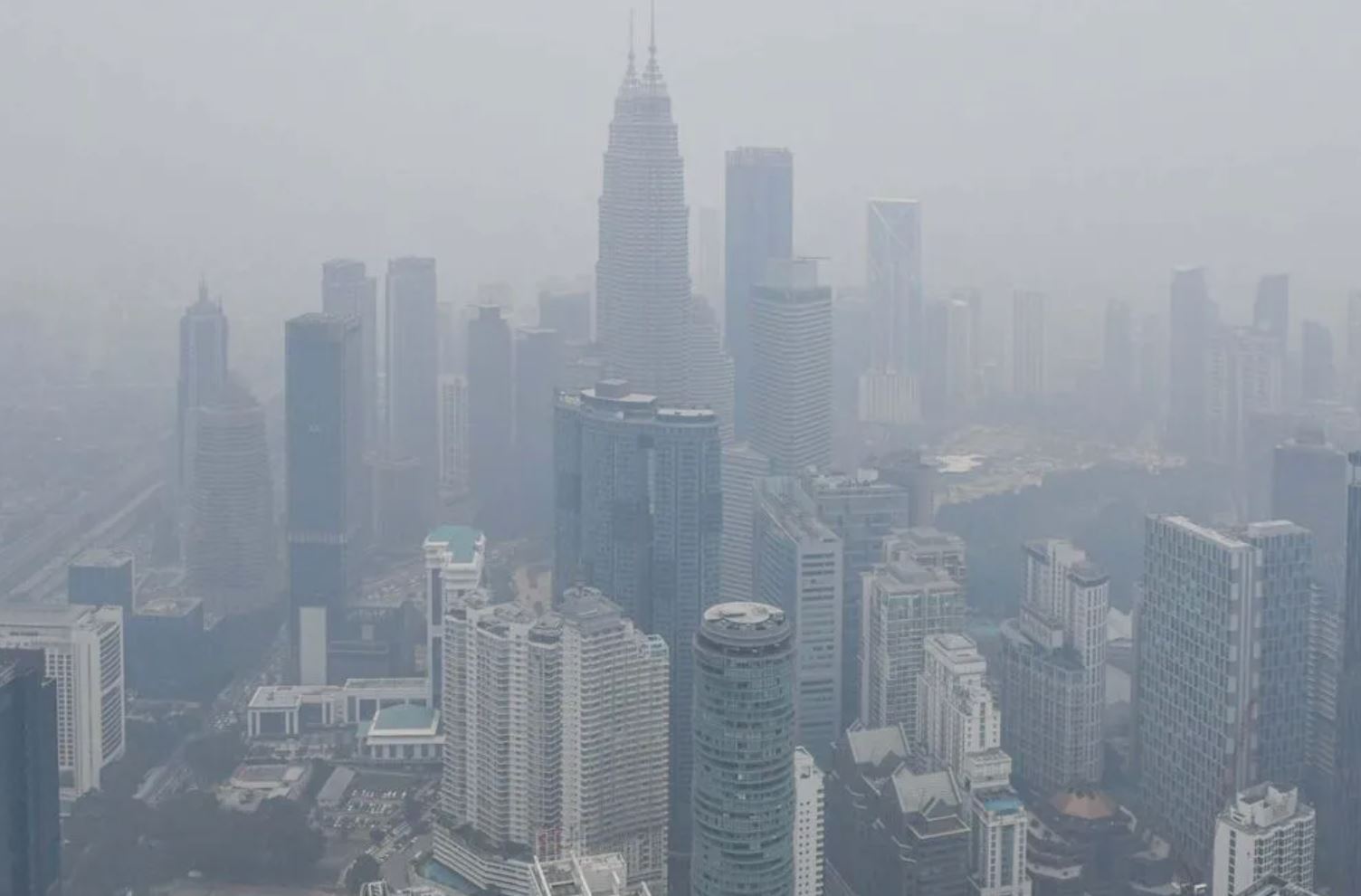It’s that time of year again — your nose is congested, your eyes are itching, and your throat feels drier than usual. If you’ve been experiencing these symptoms recently, you're not imagining it. The haze has returned, and it’s making its presence felt across Malaysia.
So, where's all the smoke coming from?
In short, it’s coming from both sides of the border. Over in Indonesia, the Riau province has been hit hard by forest and peatland fires. Just in the last few days, there have been over 150 fires reported, particularly in areas like Rokan Hilir and Rokan Hulu. The fires have already destroyed more than 50 hectares of land, and the smoke has reduced visibility in some regions to a mere 1km. Satellite data from Indonesia’s meteorological agency shows that the haze is drifting northeast, spreading into parts of Malaysia, including Negeri Sembilan.
 Photo via Astro Gempak
Photo via Astro Gempak
But Malaysia has its own fire troubles too.
What’s happening on home turf?
According to the Malaysian Fire and Rescue Department, there have been over 8,000 fire incidents so far this year, ranging from bushfires to open burning. In July alone, there was a significant blaze in Bukit Kajang Prima that consumed 1.5 hectares of land, requiring 30 firefighters and six fire trucks to contain it. Another fire recently broke out near Bukit Jalil.
So, it’s not just your neighbour’s fires causing the problem — it's a combination of both sides of the border.
The air quality? It’s not great.
The latest data from Malaysia’s Department of Environment shows that the Air Pollutant Index (API) has spiked in several areas across the country. As of the weekend and continuing into today, 25 July, the following areas are reporting concerning levels:
-
Alor Gajah, Melaka – 165
-
Nilai, Negeri Sembilan – 162
-
Mentakab, Pahang – 159
-
Banting, Selangor – 157
-
Cheras, Kuala Lumpur – 154
-
Johan Setia, Selangor – 153
-
Putrajaya – 130
-
Bukit Rambai, Melaka – 110
Anything above 100 on the API scale is considered unhealthy, and many of these locations are now nearing the "stay inside" level. If you’ve noticed the air feeling thick and heavy, it’s not just your imagination.
What does this mean for us?
The ASEAN Specialised Meteorological Centre has issued a Level 2 transboundary haze alert, warning that conditions may worsen before improving, especially with the current dry weather.
How to protect yourself:
-
Stay indoors as much as possible. If you have air conditioning or air purifiers, keep them running.
-
Wear an N95 mask if you absolutely have to go outside — these masks help filter out harmful particles.
-
Keep your windows shut and avoid using fans that could pull in polluted air.
-
Drink plenty of water to help soothe your throat and stay hydrated.
-
Skip outdoor activities like jogging or long walks. If you do go outside, try to limit your exposure to the polluted air.
Stay safe, and if you can, keep yourself and your family indoors until the air quality improves.
